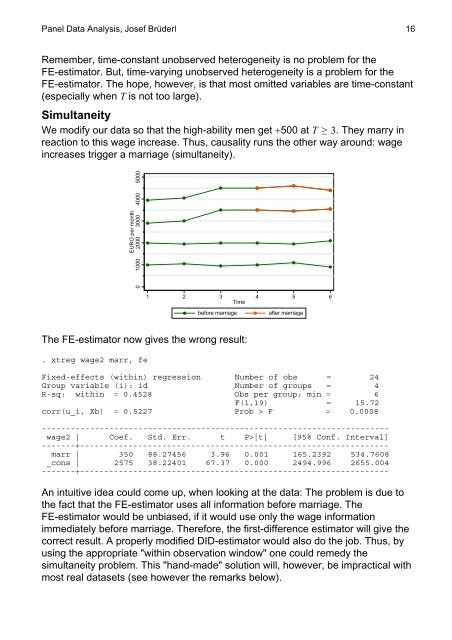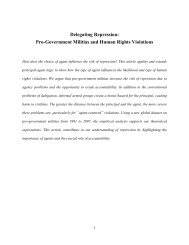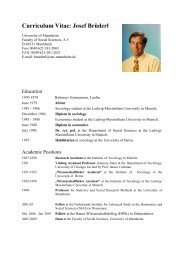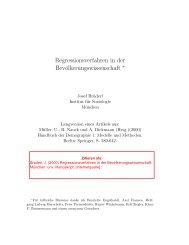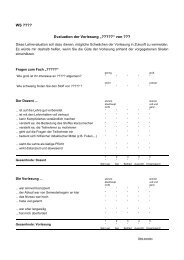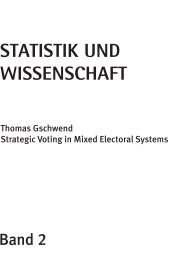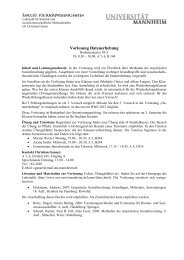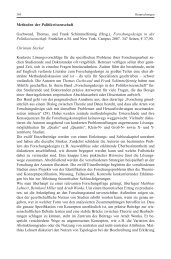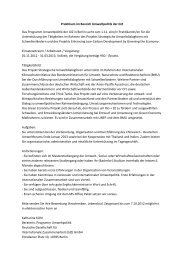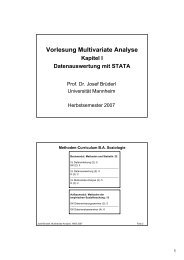Panel Data Analysis, Josef Brüderl - Sowi
Panel Data Analysis, Josef Brüderl - Sowi
Panel Data Analysis, Josef Brüderl - Sowi
You also want an ePaper? Increase the reach of your titles
YUMPU automatically turns print PDFs into web optimized ePapers that Google loves.
<strong>Panel</strong> <strong>Data</strong> <strong>Analysis</strong>, <strong>Josef</strong> Brüderl 16<br />
Remember, time-constant unobserved heterogeneity is no problem for the<br />
FE-estimator. But, time-varying unobserved heterogeneity is a problem for the<br />
FE-estimator. The hope, however, is that most omitted variables are time-constant<br />
(especially when T is not too large).<br />
Simultaneity<br />
We modify our data so that the high-ability men get 500 at T ≥ 3. They marry in<br />
reaction to this wage increase. Thus, causality runs the other way around: wage<br />
increases trigger a marriage (simultaneity).<br />
EURO per month<br />
0 1000 2000 3000 4000 5000<br />
1 2 3 4 5 6<br />
Time<br />
before marriage<br />
after marriage<br />
The FE-estimator now gives the wrong result:<br />
. xtreg wage2 marr, fe<br />
Fixed-effects (within) regression Number of obs 24<br />
Group variable (i): id Number of groups 4<br />
R-sq: within 0.4528 Obs per group: min 6<br />
F(1,19) 15.72<br />
corr(u_i, Xb) 0.5227 Prob F 0.0008<br />
------------------------------------------------------------------------<br />
wage2 | Coef. Std. Err. t P|t| [95% Conf. Interval]<br />
-----------------------------------------------------------------------<br />
marr | 350 88.27456 3.96 0.001 165.2392 534.7608<br />
_cons | 2575 38.22401 67.37 0.000 2494.996 2655.004<br />
-----------------------------------------------------------------------<br />
An intuitive idea could come up, when looking at the data: The problem is due to<br />
the fact that the FE-estimator uses all information before marriage. The<br />
FE-estimator would be unbiased, if it would use only the wage information<br />
immediately before marriage. Therefore, the first-difference estimator will give the<br />
correct result. A properly modified DID-estimator would also do the job. Thus, by<br />
using the appropriate "within observation window" one could remedy the<br />
simultaneity problem. This "hand-made" solution will, however, be impractical with<br />
most real datasets (see however the remarks below).


